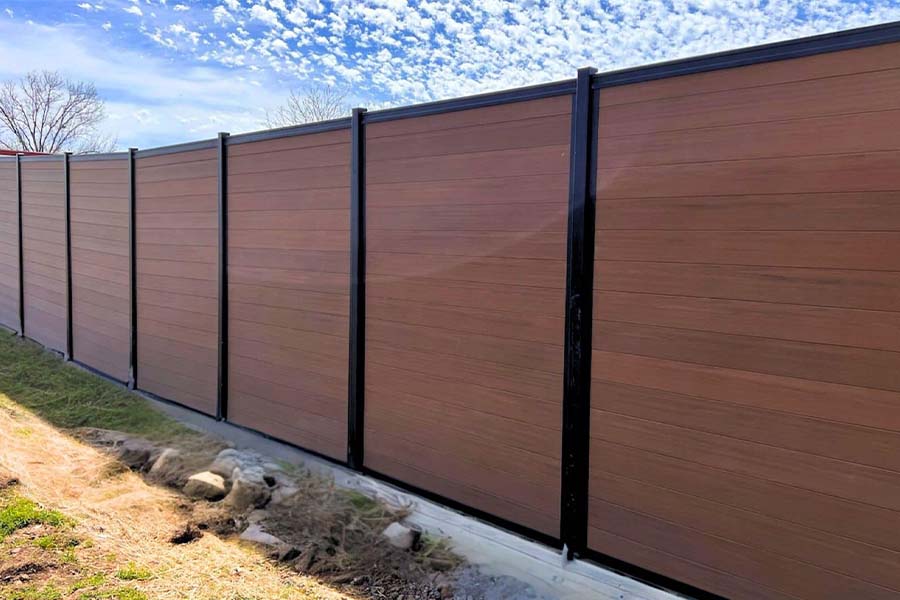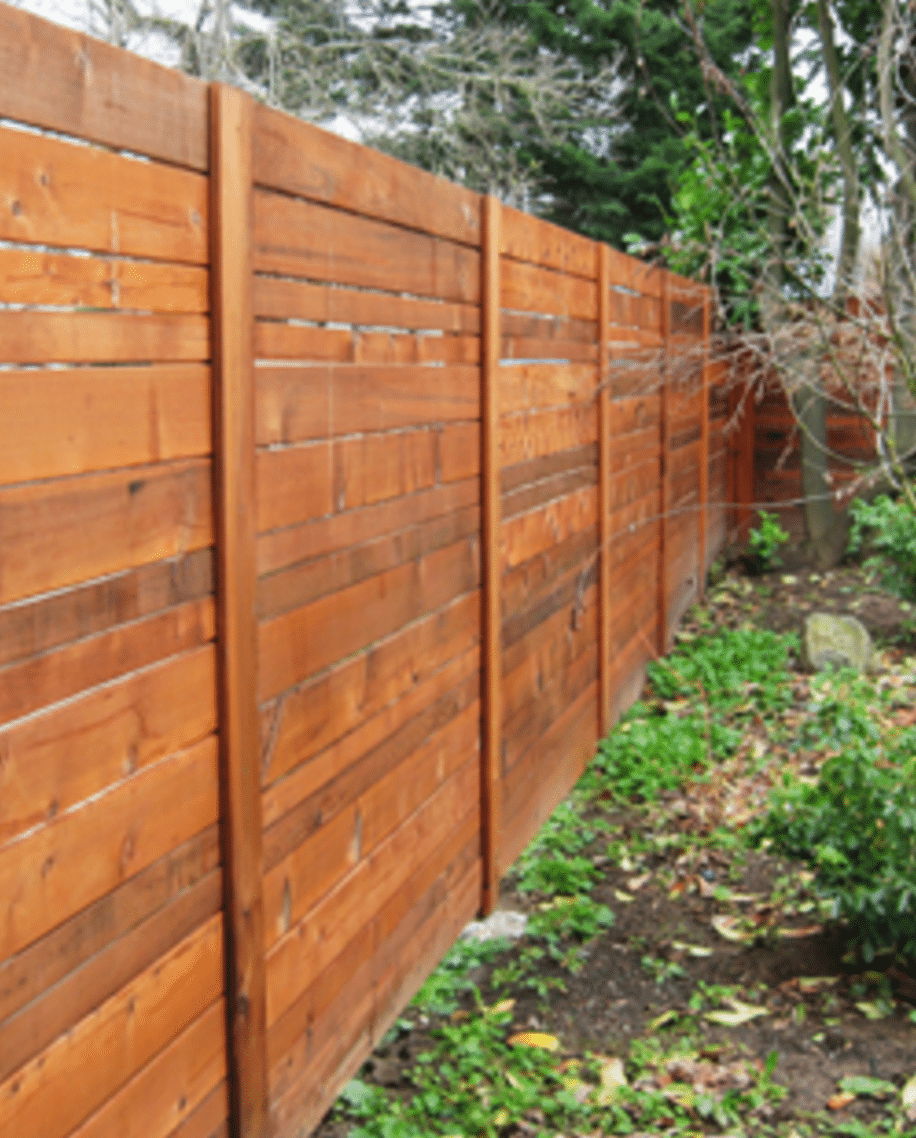All Categories
Featured
Fencings play a vital role in giving privacy, protection, and enhancing the visual allure of your home. Consistent exposure to the elements can lead to tear and put on. From hefty rainfall and snow to extreme sun and wind, weather-related damage is one of one of the most common root causes of fencing wear and tear. While you can't manage the weather, there are a number of methods to protect your fence from the destructive results of weather condition and ensure it lasts for several years to find.
Wooden Fencings: While wooden fences are a classic option, they are extremely vulnerable to dampness and bugs. To make a wood fence much more sturdy, choose pressure-treated lumber, cedar, or redwood. These products are extra resistant to rot and bugs. You'll still require to protect the timber from the aspects with routine maintenance.
Plastic Fences: Vinyl fencings are highly sturdy and need little upkeep. They are resistant to fading, breaking, and warping, making them perfect for areas that experience extreme sun, rain, or winter. Vinyl additionally will not rot or attract insects, supplying long-term defense without the requirement for constant upkeep.
Metal Fences: Wrought iron and light weight aluminum fences are superb choices for their stamina and resistance to wind and moisture. They are susceptible to rusting over time, especially if subjected to frequent rainfall or humidity. Go with galvanized or powder-coated metal fences to reduce the danger of corrosion.
![]()
Composite Fences: Incorporating timber fibers and plastic, composite fencings are resistant to decomposing, fading, and bug damage. They supply the appearance of timber with less upkeep, making them an ideal alternative for areas with variable climate conditions.
![]()
Wood Fences: A high quality timber sealant or discolor is necessary to protect your fence from the components. Timber sealers obstruct dampness and shield against mold and mildew and mold development. They also stop UV damages that can trigger fading and cracking. Make sure to reapply the finish every pair of years to keep your surround leading condition.
Plastic Fences: While vinyl is low-maintenance, you can still safeguard it even more by using a UV protectant. These coverings help avoid discoloration brought on by long term sunlight exposure. Furthermore, use vinyl-specific cleaners to keep the surface area without discolorations or dust accumulation.
Metal Fences: To secure metal fencings from corrosion and rust, take into consideration applying a rust-inhibiting primer complied with by a safety paint created for outside usage. When possible, powder finishing offers a durable and long lasting surface that can hold up against extreme weather condition.
Wooden Fences: Tidy your wooden fence with a pressure washing machine or a soft cloth and light cleaning agent. Check the fencing consistently for signs of rot, cracks, or insect problems.
Vinyl Fences: Plastic fences are very easy to clean with soap and water. For harder spots, you can make use of a moderate bleach solution or a plastic cleaner to restore the fencing's look. Do not fail to remember to examine for any type of splits that might allow water in, resulting in additional damages.
Metal Fences: Clean steel fencings with a soft fabric to eliminate dust, dust, and corrosion. If you see corrosion places, remove them quickly with a wire brush and deal with the area with a rust-resistant guide or paint to stop it from spreading out.
Wood Fencings: When installing wood fence articles, make certain they are set deeply right into the ground, preferably listed below the frost line to stop changing during freezing temperature levels. Use concrete to protect the blog posts and prevent them from being or leaning rooted out by solid winds.
Steel Fencings: For metal fencings, ensure that the blog posts are firmly anchored in concrete. This is particularly vital in areas with constant tornados or heavy winds. You might also want to install added bracing to offer added assistance against wind tension.
Furthermore, extreme wetness from neighboring plants can result in mold and rot in wood fencings, so keep plant life at a secure distance to enable for proper air movement and drainage.
Metal fencings should be checked for rust before the winter period begins, and any affected areas should be treated with rust-resistant items. Furthermore, using a layer of paint or safety finish before the cool weather collections in can assist protect your fence from ice and snow damages.
![]()
Conclusion. Safeguarding your fencing from weather-related damage needs a combination of proper product option, routine maintenance, and positive care. Whether you have a wood, plastic, metal, or composite fencing, the best protective procedures can expand its life-span and preserve its appearance. By following these simple yet reliable actions, you can safeguard your fencing versus the elements and keep it looking fantastic for several years to come.
- Pick Weather-Resistant Materials. One of the most efficient methods to secure your fence is by picking the right product for your environment. Particular products are more durable and better matched to stand up to particular weather.
Wooden Fencings: While wooden fences are a classic option, they are extremely vulnerable to dampness and bugs. To make a wood fence much more sturdy, choose pressure-treated lumber, cedar, or redwood. These products are extra resistant to rot and bugs. You'll still require to protect the timber from the aspects with routine maintenance.
Plastic Fences: Vinyl fencings are highly sturdy and need little upkeep. They are resistant to fading, breaking, and warping, making them perfect for areas that experience extreme sun, rain, or winter. Vinyl additionally will not rot or attract insects, supplying long-term defense without the requirement for constant upkeep.
Metal Fences: Wrought iron and light weight aluminum fences are superb choices for their stamina and resistance to wind and moisture. They are susceptible to rusting over time, especially if subjected to frequent rainfall or humidity. Go with galvanized or powder-coated metal fences to reduce the danger of corrosion.

Composite Fences: Incorporating timber fibers and plastic, composite fencings are resistant to decomposing, fading, and bug damage. They supply the appearance of timber with less upkeep, making them an ideal alternative for areas with variable climate conditions.
- Apply Safety Coatings. Despite the material, applying protective finishes is crucial in prolonging the life of your fencing. Coatings develop a barrier that shields your fence from moisture, UV rays, and various other environmental stress factors.

Wood Fences: A high quality timber sealant or discolor is necessary to protect your fence from the components. Timber sealers obstruct dampness and shield against mold and mildew and mold development. They also stop UV damages that can trigger fading and cracking. Make sure to reapply the finish every pair of years to keep your surround leading condition.
Plastic Fences: While vinyl is low-maintenance, you can still safeguard it even more by using a UV protectant. These coverings help avoid discoloration brought on by long term sunlight exposure. Furthermore, use vinyl-specific cleaners to keep the surface area without discolorations or dust accumulation.
Metal Fences: To secure metal fencings from corrosion and rust, take into consideration applying a rust-inhibiting primer complied with by a safety paint created for outside usage. When possible, powder finishing offers a durable and long lasting surface that can hold up against extreme weather condition.
- Normal Cleaning and Examinations. Proper cleansing and normal assessments are vital to maintaining the integrity of your fence. Build-up of mold and mildew, particles, and dust can trap wetness against your fence and cause long-term damages.
Wooden Fences: Tidy your wooden fence with a pressure washing machine or a soft cloth and light cleaning agent. Check the fencing consistently for signs of rot, cracks, or insect problems.
Vinyl Fences: Plastic fences are very easy to clean with soap and water. For harder spots, you can make use of a moderate bleach solution or a plastic cleaner to restore the fencing's look. Do not fail to remember to examine for any type of splits that might allow water in, resulting in additional damages.
Metal Fences: Clean steel fencings with a soft fabric to eliminate dust, dust, and corrosion. If you see corrosion places, remove them quickly with a wire brush and deal with the area with a rust-resistant guide or paint to stop it from spreading out.
- Reinforce Your Fence with Proper Installment. Proper setup is just one of the most reliable means to avoid weather-related damages. A fence that is poorly set up is more probable to collapse or experience damages throughout storms.
Wood Fencings: When installing wood fence articles, make certain they are set deeply right into the ground, preferably listed below the frost line to stop changing during freezing temperature levels. Use concrete to protect the blog posts and prevent them from being or leaning rooted out by solid winds.
Steel Fencings: For metal fencings, ensure that the blog posts are firmly anchored in concrete. This is particularly vital in areas with constant tornados or heavy winds. You might also want to install added bracing to offer added assistance against wind tension.
- Trim Trees and Hedges Near Your Fence. Disordered trees and bushes can trigger considerable damages to your fencing, especially throughout high winds or hefty storms. Tree branches can scratch against the fencing, causing scratches, and their roots can undercut the articles. Keep greenery trimmed and make certain that tree branches are not leaning on or near the fencing.
Furthermore, extreme wetness from neighboring plants can result in mold and rot in wood fencings, so keep plant life at a secure distance to enable for proper air movement and drainage.
- Winterize Your Fence. If you reside in an area with harsh winters, take extra precautions to protect your fence from freezing temperature levels, snow, and ice. For wooden fences, make certain the base of the messages is elevated above ground degree to prevent water buildup, which can break the wood and freeze. Consider utilizing a dampness barrier around the base of the blog posts to keep them completely dry throughout the winter season.
Metal fencings should be checked for rust before the winter period begins, and any affected areas should be treated with rust-resistant items. Furthermore, using a layer of paint or safety finish before the cool weather collections in can assist protect your fence from ice and snow damages.
- Post-Storm Repair works. Storms can cause immediate damage to your fence, including fallen branches, damaged blog posts, or dislodged panels. If your fencing has been severely harmed, it's an excellent concept to get in touch with a specialist for repair services to ensure it continues to be structurally audio.

Conclusion. Safeguarding your fencing from weather-related damage needs a combination of proper product option, routine maintenance, and positive care. Whether you have a wood, plastic, metal, or composite fencing, the best protective procedures can expand its life-span and preserve its appearance. By following these simple yet reliable actions, you can safeguard your fencing versus the elements and keep it looking fantastic for several years to come.
Latest Posts
Explore Best Car Repair Solutions at Montclare Auto Repair – Reliable Repairs Await
Published Jun 01, 25
1 min read
Learn Why Chicago Drivers Select Montclare Auto Repair for Reliable Service and Significant Savings
Published May 30, 25
1 min read
Secure Your Home with Quality Residential Roof
Published May 25, 25
1 min read
More
Latest Posts
Explore Best Car Repair Solutions at Montclare Auto Repair – Reliable Repairs Await
Published Jun 01, 25
1 min read
Learn Why Chicago Drivers Select Montclare Auto Repair for Reliable Service and Significant Savings
Published May 30, 25
1 min read
Secure Your Home with Quality Residential Roof
Published May 25, 25
1 min read